Big Raven 1931
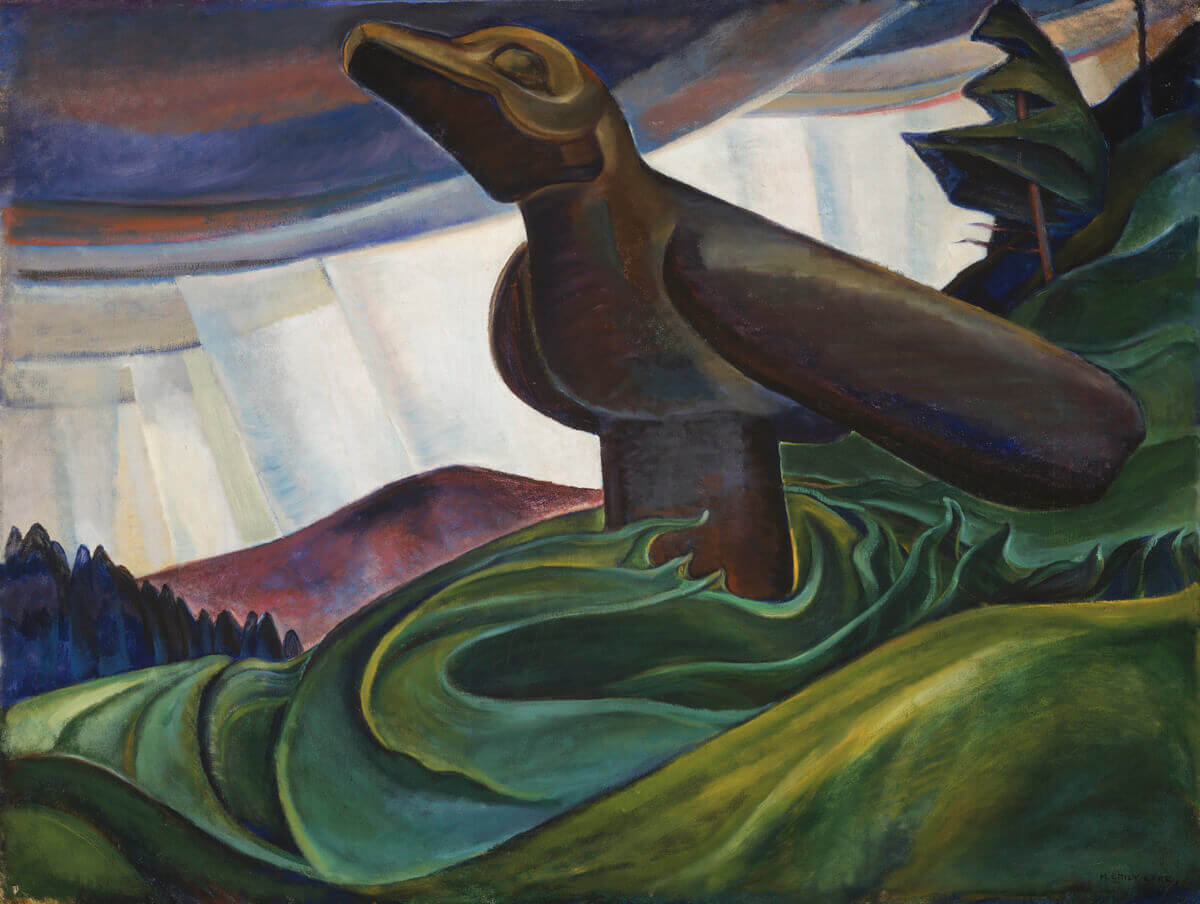
Emily Carr, Big Raven, 1931
Oil on canvas, 87 x 114 cm
Vancouver Art Gallery
In Big Raven solid waves of vegetation and columns of illuminated sky set off the lone figure of the raven, creating an elegiac quality that reflects a new stage in Carr’s approach to First Nations themes. Traditionally integrated into the life of the village, the raven has been reclaimed by the forest. The sense of mass signals the development by Carr of a new pictorial language and a new emphasis on indigenous life as threatened: the raven is placed outside the vibrant framework of village life.
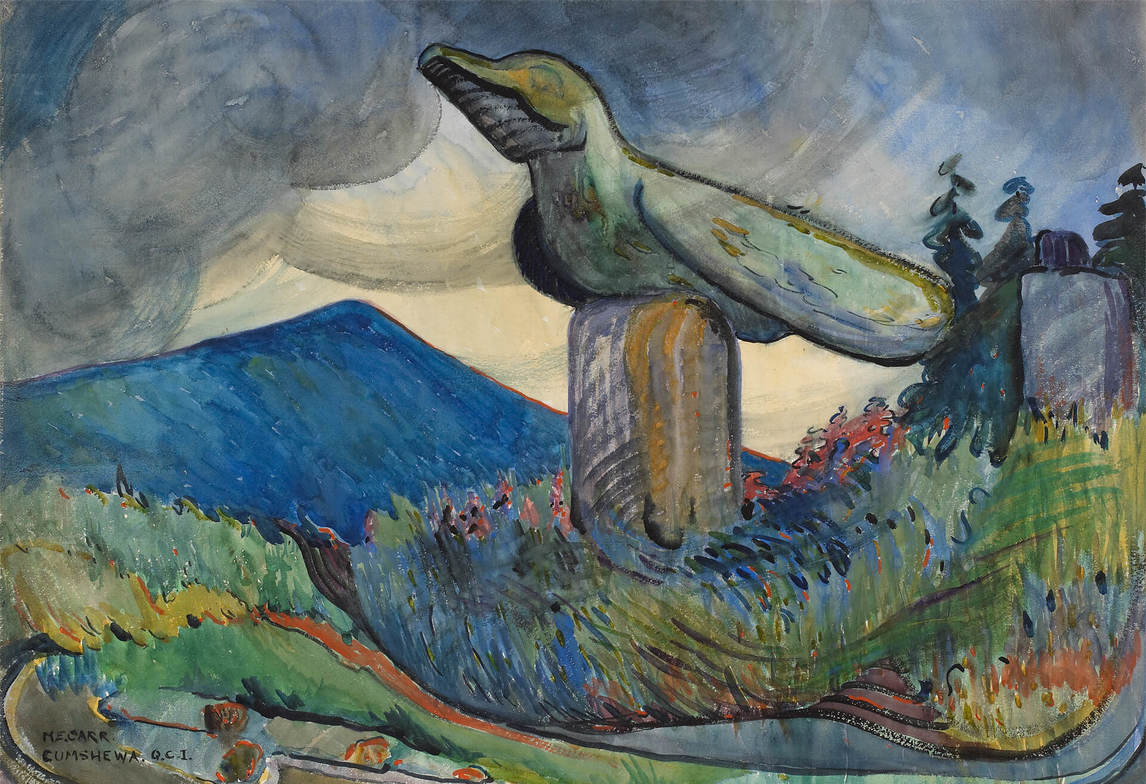
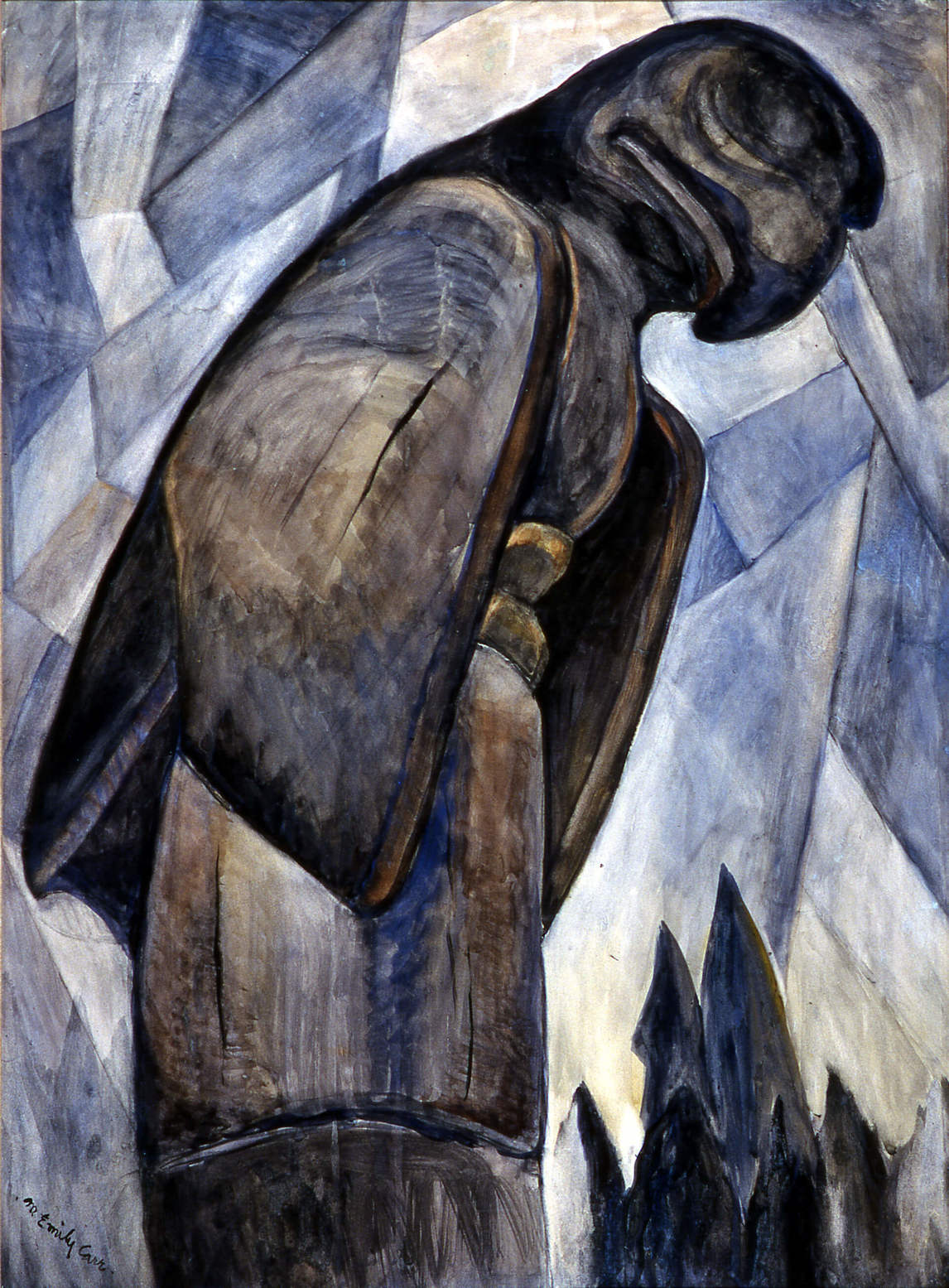
After witnessing the boldness of vision of the Group of Seven artists in 1927, when she participated in Exhibition of Canadian West Coast Art: Native and Modern at the National Gallery of Canada, Carr was inspired to infuse her work with equivalent power, emotion, and spirituality. The subject matter of Big Raven is one that Carr addressed earlier in her work Cumshewa, 1912. During the early 1930s, however, Carr shifts her focus compositionally, chromatically, and stylistically. As we can see by comparing Big Raven and Cumshewa, she crops and frames individual totem poles and figures; her modelling of the forms becomes sculptural and densely weighted.
Two other paintings from this period—Grizzly Bear Totem, Angidah, Nass River, c. 1930, and the remarkable Big Eagle, Skidigate, B.C., 1929—demonstrate the extent of Carr’s stylistic transformation. In Grizzly Bear Totem Carr fully integrates her French palette with the B.C. landscape—deep tonalities are enriched and infused with colour, a slash of red invites a provocative rereading of the subject, and the close-cropping amplifies the totemic force of the figure. In Big Eagle the carved eagle is locked in by a fractured Cubist skyscape; the sense of three-dimensionality reaches from figure to sky, replacing a classical figure-ground composition. In their nascent exploration of abstraction, all three works reflect the influences of Lawren Harris (1885–1970), other members of the Group of Seven, and Mark Tobey (1890–1976), a founder of the Northwest School in the United States.

 About the Author
About the Author
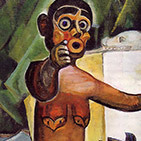 More Online Art Books
More Online Art Books
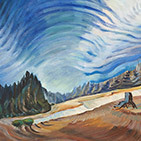 Acknowledgements
Acknowledgements